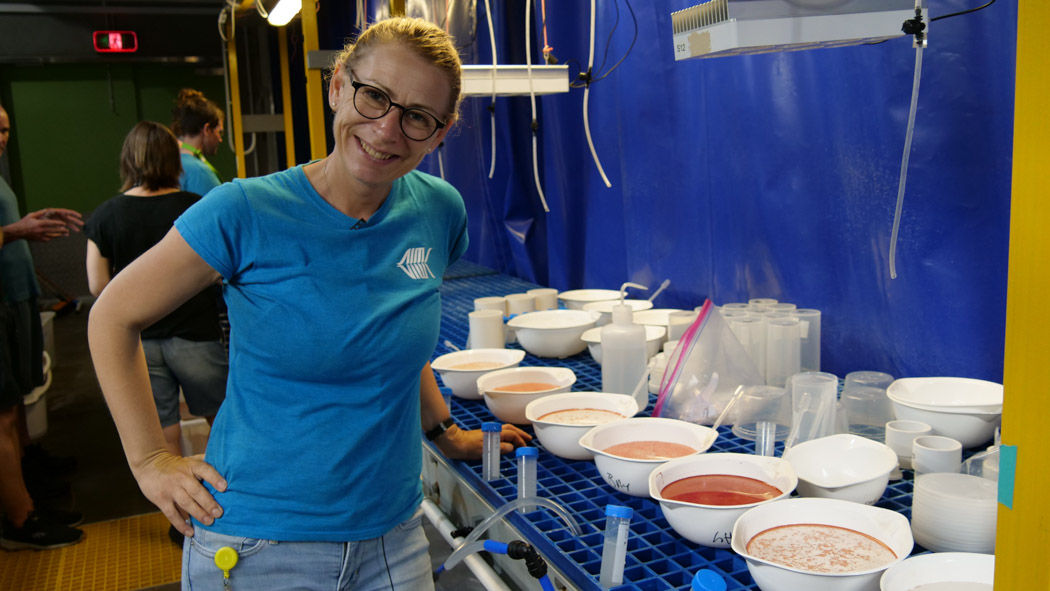Researchers at the Australian Institute of Marine Science are raising the next generation of corals which may hold the keys to helping the Great Barrier Reef adapt to changing ocean conditions.
AIMS researchers spawned more than 200 individual coral colonies from more than 20 different species in one of the largest captive spawning events in the world’s most advanced research aquarium facility, near Townsville.
For at least six species it was the first time these corals had spawned in the National Sea Simulator.
AIMS principal research scientist Dr Line Bay said the annual spawning was a wonderful time of renewal for coral reefs and an important opportunity for scientists to study a range of critical questions.
Dr Line Bay watches over coral spawning experiments in the National Sea Simulator
“Our focus is on understanding how the next generation of corals respond and adapt to a range of environmental stressors including pollution, sedimentation, warming and acidification,” Dr Bay said.
“This information is required to keep existing management approaches up to date and to develop new tools that may be required to keep reefs healthy into the future.
“We interbreed corals in ways that allow us to predict their rates of adaptation – a trait of vital importance to predict corals’ responses to warming reef water temperatures.”
AIMS coral ecologist Dr Carly Randall said successfully spawning and settling coral larvae was a cornerstone of any large-scale coral seeding program, a potential reef restoration intervention.
“We have successfully settled branching (Acropora) corals for many years but the Great Barrier Reef is composed of a great range of species, and our work is therefore focussed on understanding this diversity,” Dr Randall said.
“Based on AIMS’ long-term monitoring data we have identified and selected a number of key coral species which make a significant contribution to reef development and structure.
“This season we have bred 20 species and we are now following 12 of those into the next phase of their life.”
This spawning research will play a vital role in the Reef Restoration and Adaptation Program, the world’s largest and most ambitious effort to help coral reefs resist, adapt, and recover from the impacts of climate change.
Media Contact
Australian Institute of Marine Science
Media Officer Emma Chadwick
Mobile: 0412 181 919 or email: e.chadwick@aims.gov.au


